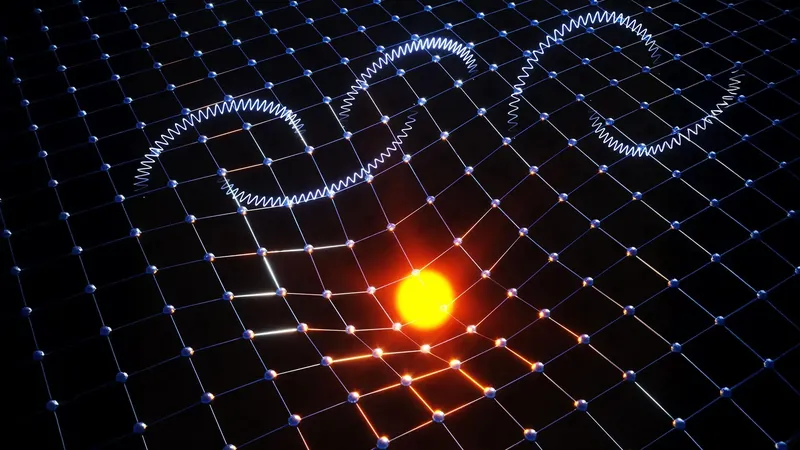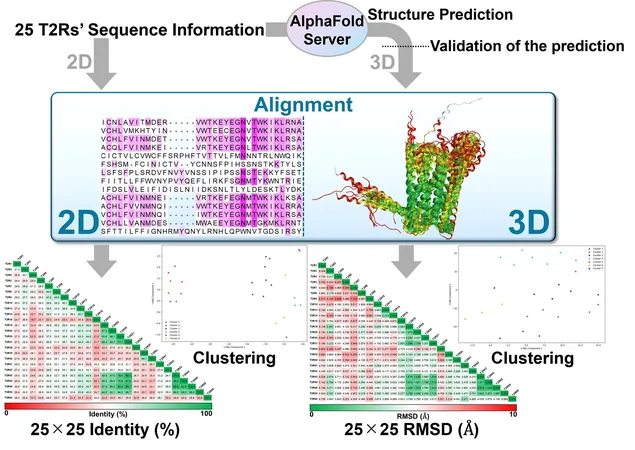
Breakthrough Algorithm Finally Tackles Epic Physics Challenge!
2025-07-14
Author: Ming
The Quest to Decode Particle Interactions
Back in the 1940s, brilliant physicist Richard Feynman introduced a visionary tool to visualize the interactions among electrons, photons, and other fundamental particles: the iconic Feynman diagrams. These illustrations, featuring straight and wavy lines converging at vertices, may seem simple, but they empower scientists to calculate the probabilities of various particle collisions with remarkable precision.
Unlocking the Polaron Mystery
Despite their elegance, these diagrams can multiply exponentially, as numerous representations are required for each possible interaction. Marco Bernardi, a prominent figure in applied physics at Caltech, emphasizes the importance of addressing this challenge: "Summing all Feynman diagrams with quantitative accuracy is a holy grail in theoretical physics." His team's latest achievement, detailed in a groundbreaking paper in Nature Physics, focuses on tackling the complex polaron problem by quantifying the so-called electron-phonon interactions.
Polarons: The Electron-Lattice Dynamos
In many materials, electrons interact robustly with the atomic lattice, forming intriguing entities known as polarons. These hybrid states reflect the intricate relationship between electrons and lattice distortions, which can dramatically affect electron mobility. This phenomenon is particularly pronounced in insulators and semiconductors, complicating our understanding of their electrical properties.
The Challenge of Accurate Computation
For materials exhibiting strong electron-lattice interactions, traditional perturbation theory falls flat. Continued interactions escalate in importance, leading to computational chaos. As Bernardi aptly puts it, "It's basically a nightmare in terms of scaling." The challenge? Accurately computing vast numbers of diagrams and interactions without being overwhelmed by the sheer computational demand.
Revolutionizing Diagrams with Smart Sampling
To tackle this computational beast, the Caltech researchers employed a novel approach called diagrammatic Monte Carlo (DMC). This innovative algorithm effectively samples the expansive space of Feynman diagrams, focusing on the most consequential areas to offer insights into electron-phonon interactions. By refining previous matrix compression techniques, they managed to streamline calculations, making it feasible to apply DMC to real materials.
A New Era for Material Science
Applying their new method to systems like lithium fluoride and titanium dioxide, the team is now poised to predict a remarkable array of material properties concerning strong electron-phonon interactions. Bernardi envisions their work having far-reaching implications, potentially opening doors not just in our understanding of polarons but also in studying interactions between light and matter in other physical frameworks.
A Game-Changing Breakthrough!
The findings, presented in the paper titled "First principles diagrammatic Monte Carlo for electron-phonon interactions and polaron," mark a pivotal moment in physics. Backed by significant funding from various U.S. agencies, including the Department of Energy and the National Science Foundation, this remarkable research could reshape our approach to exploring new materials and their applications.
With such groundbreaking advancements underway, the quest to unravel the mysteries of particle physics continues to thrive, promising a future filled with exciting discoveries!



 Brasil (PT)
Brasil (PT)
 Canada (EN)
Canada (EN)
 Chile (ES)
Chile (ES)
 Česko (CS)
Česko (CS)
 대한민국 (KO)
대한민국 (KO)
 España (ES)
España (ES)
 France (FR)
France (FR)
 Hong Kong (EN)
Hong Kong (EN)
 Italia (IT)
Italia (IT)
 日本 (JA)
日本 (JA)
 Magyarország (HU)
Magyarország (HU)
 Norge (NO)
Norge (NO)
 Polska (PL)
Polska (PL)
 Schweiz (DE)
Schweiz (DE)
 Singapore (EN)
Singapore (EN)
 Sverige (SV)
Sverige (SV)
 Suomi (FI)
Suomi (FI)
 Türkiye (TR)
Türkiye (TR)
 الإمارات العربية المتحدة (AR)
الإمارات العربية المتحدة (AR)